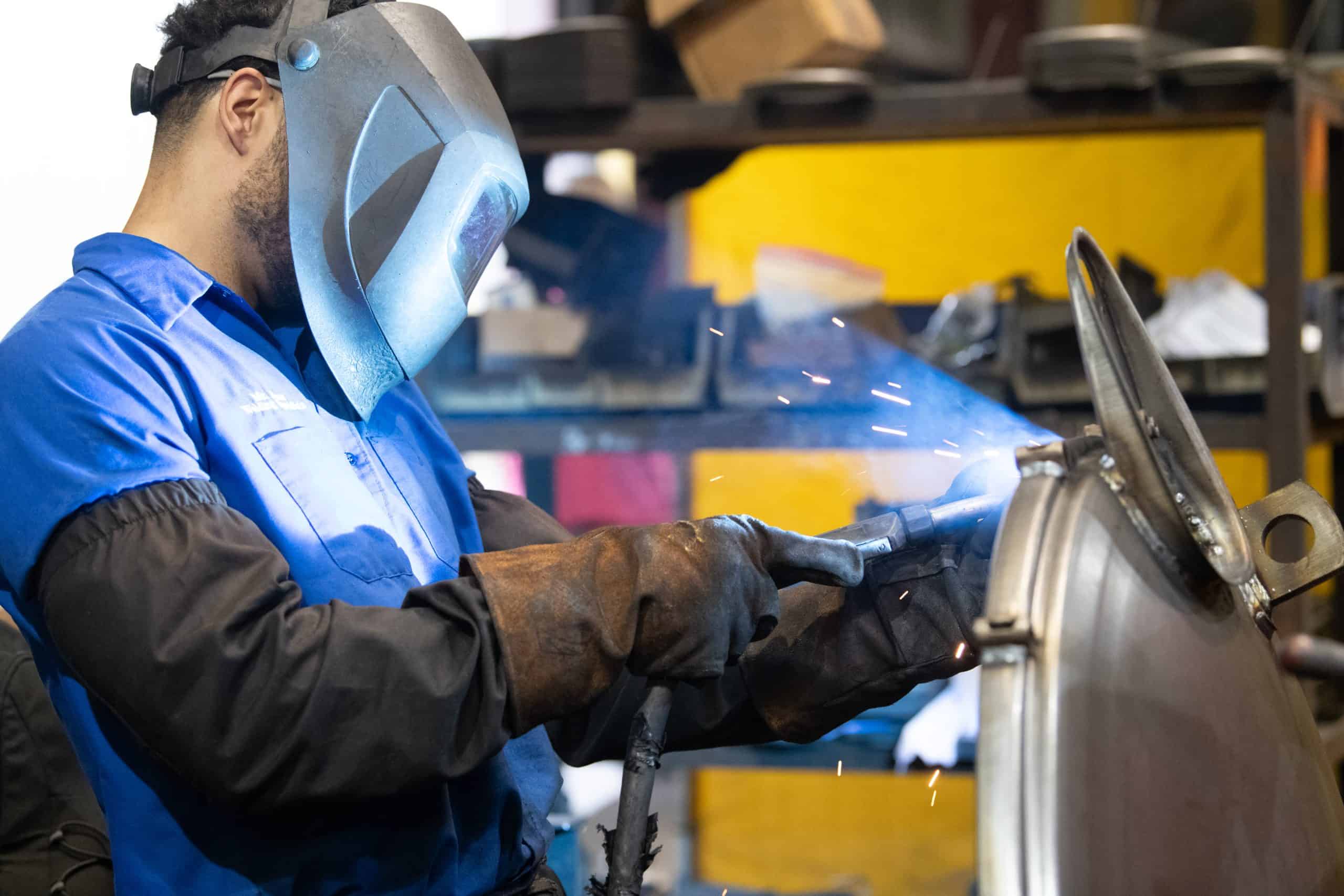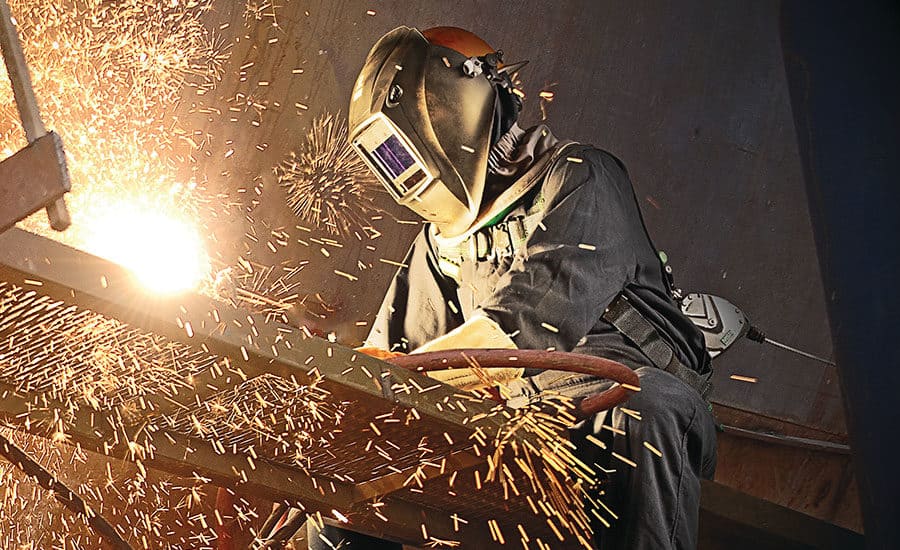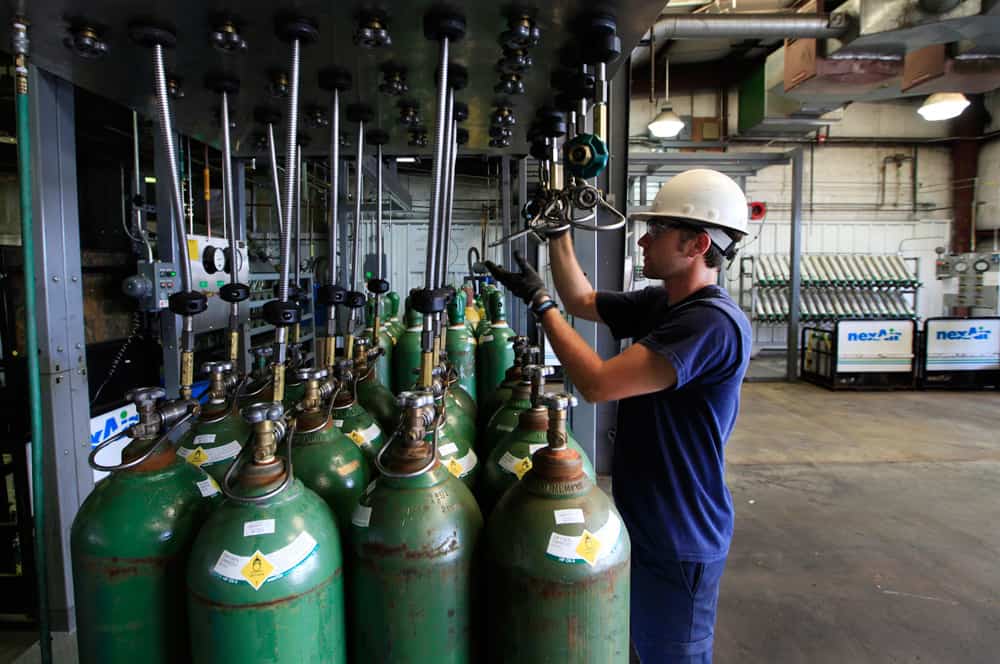Mastering Welding Safety: Best Practices from nexAir KnowHow
Behind every skilled welder stands years of practice – and an unwavering commitment to safety protocols. Even experienced professionals face significant risks without proper precautions. Burns, eye damage, respiratory issues, and electrical hazards represent just a few dangers present in welding environments. Our team has compiled essential safety practices that protect welders while maintaining productivity.
Creating a Protected Workspace
Safety begins before the first spark flies. A properly prepared workspace eliminates many hazards before they develop into accidents.
Fire prevention demands removing or covering flammable materials within 35 feet of welding operations. Wooden floors require protection with fire-resistant blankets, while walls and ceilings need similar consideration in confined spaces. Keeping a functional fire extinguisher within immediate reach provides critical backup when unexpected ignition occurs.
Ventilation frequently determines whether a welding environment remains safe or gradually becomes hazardous. General shop ventilation provides minimum protection, but local exhaust systems that capture fumes at their source deliver dramatically better results. These systems help fabricators Forge Forward with improved productivity by reducing respiratory issues that affect welder stamina and focus.
Clear paths around welding stations allow quick exit during emergencies while providing space for assistants or supervisors to move safely during operations. This fundamental safety consideration costs nothing but potentially prevents serious injuries during unexpected situations.
Personal Protective Equipment Essentials
Quality protective gear forms the foundation of welder safety. While basic equipment prevents immediate injuries, thoughtfully selected gear enhances both protection and comfort during extended operations.
Modern auto-darkening helmets offer superior protection and productivity compared to fixed-shade alternatives. Their rapid response prevents flash exposure during arc starts, while variable darkness settings accommodate different processes and amperages. The modest additional investment delivers significant safety improvements alongside noticeably higher productivity.
Respiratory protection requirements vary based on materials, processes, and environment. Standard particulate masks provide minimal protection, while powered air-purifying respirators deliver dramatically better protection during extended operations or when working with specialized materials that produce particularly hazardous fumes.
Hand protection deserves special attention beyond standard leather gloves. TIG welding benefits from thinner, high-dexterity options, while stick welding requires heavier insulation against both heat and electrical hazards. Having process-specific hand protection available encourages proper usage rather than welders working bare-handed when standard gloves prove too cumbersome.
Electrical Safety Fundamentals
Electrical hazards cause both immediate injuries and equipment damage that creates future safety risks. Proper electrical safety practices protect both personnel and valuable equipment.
Regular inspection of cables and connections prevents developing problems from becoming serious hazards. Looking for cracked insulation, loose connections, and proper grounding takes just minutes but potentially prevents severe injuries. Establishing weekly cable inspection routines creates a habit that consistently identifies problems before they cause incidents.
Secondary voltage shock often gets dismissed as merely uncomfortable rather than truly dangerous. However, even relatively low voltages can cause falls, reflex reactions, or heart problems under certain conditions. Proper insulation and dry conditions remain essential even when working with “safer” welding circuits.
Machine placement significantly affects electrical safety. Positioning equipment to minimize cable crossing in work areas reduces tripping hazards while preventing insulation damage that creates shock risks. This simple workspace organization step costs nothing while preventing multiple hazard types.
Cylinder and Pressure System Management
Gas cylinders contain tremendous energy that requires proper handling and storage. Simple precautions prevent dangerous accidents involving these pressurized containers.
Secure storage using chains or specialized racks prevents cylinder falls that potentially create uncontrolled pressure releases or valve breakage. Both stationary and portable cylinders need proper restraint systems regardless of size. Our expert KnowHow™ in gas safety emphasizes that even “empty” cylinders require the same careful handling as fully charged ones.
Valve protection during transport and storage prevents damage that might cause catastrophic releases. Keeping caps in place whenever regulators aren’t connected provides essential protection against impact damage to these vulnerable components.
Pressure regulation equipment requires regular inspection for damage, proper function, and compatibility with cylinder contents. Using the wrong regulator or damaged equipment creates significant hazards that careful inspection easily prevents.
Training and Certification Considerations
Safety knowledge requires both initial learning and regular refreshers. Investing in proper training pays dividends through reduced incidents and improved productivity.
Formal certification programs provide structured learning that covers both common and uncommon hazards. These programs typically include both theoretical knowledge and practical demonstrations that develop proper safety habits from the beginning.
Regular safety meetings addressing specific workshop hazards keep awareness high, even among experienced personnel. These brief sessions work best when focusing on actual incidents or near-misses relevant to the specific work environment rather than generic safety topics.
Safety remains an ongoing commitment that requires attention and reinforcement throughout a welder’s career. By implementing these best practices and maintaining a strong safety culture, fabrication teams can significantly reduce workplace incidents while improving overall productivity and work quality.
Don't see what you're looking for?
Everything we offer is a click away and it will arrive before you know it.



